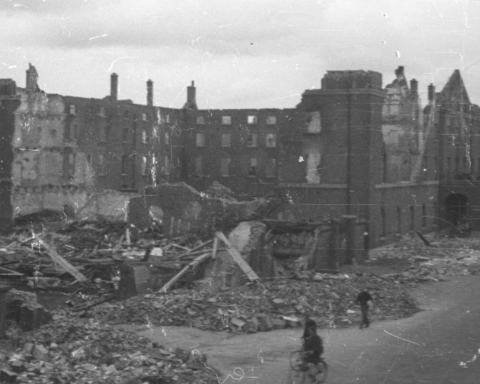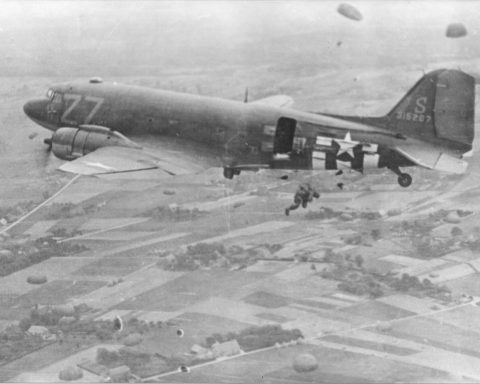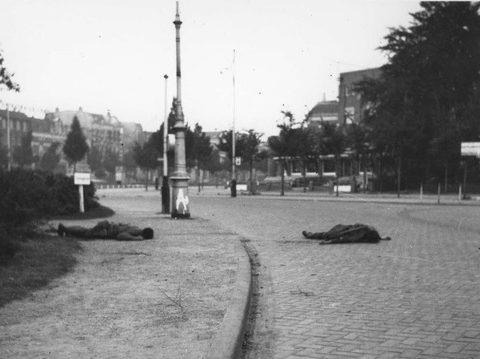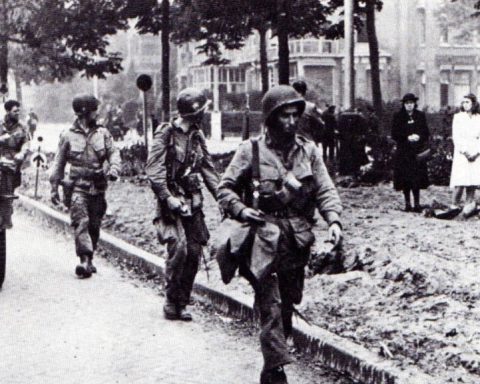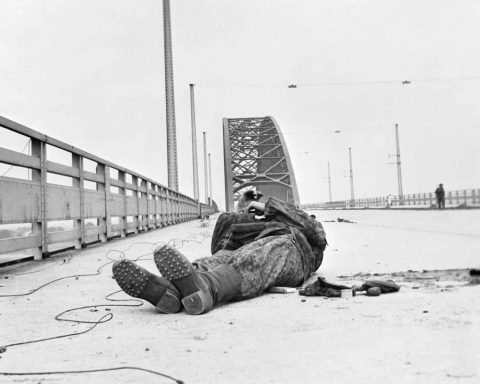The Americans call it ‘The Crossing’ for short. On Wednesday, September 20, the soldiers of the 3rd Battalion of the 504th Infantry Regiment crossed the Waal in 26 canvas boats to attack the Waal Bridge near Nijmegen from the north side.
General Jim Gavin of the 82nd Airborne Division had concluded the day before that it would only be possible to capture the Waal Bridge with an attack from both sides. The German resistance at the bridge in Nijmegen had proven to be too strong.
Because the boats needed for the crossing had to come all the way from Belgium, it took until 3 p.m. on Wednesday, September 20, before the planned crossing could take place. The truck convoy was further delayed en route by German attacks, with the loss of 6 of the 32 boats.
A location approximately one kilometer west of the railway bridge was chosen for the crossing over the Waal. The river here was about 300 meters wide. The Germans had several machine gun positions on the north side. In addition, the Germans had mortar and artillery units and there was 22 mm artillery at the railway bridge. The American crossing would not be an easy task…
To protect the crossing airborne troops as much as possible from German fire, the American artillery would provide a smoke screen over the river. Sixteen American tanks were positioned on the south bank of the Waal to fire on the German positions on the other side.

Ten soldiers from the 504th Infantry Regiment and three engineers from the engineers were assigned to each boat. The engineers had the most tedious job of all. Once the other side was reached, they had to sail the boat back to bring a new load of soldiers to the north side of the river.
At exactly 3:00 PM the artillery had created a smoke screen over the river and when the first boats entered the water at 3:15 PM, the Sherman tanks on the south bank provided covering fire. Major Julian Cook of the 504th Infantry Regiment was in the first boat. He heard his lieutenants rowing to the rhythm of the rosary: “Hail Mary, full of grace.”
The soldiers did what they could to paddle across the river as quickly as possible. In the meantime, the Germans had opened fire on the men in the boats. Initially the fire was impure, but the first victims soon fell in the boats.
Tank commander Giles Vandeleur: “It was a terrible sight. Boats were literally blown out of the water. I saw huge geysers erupting from the incoming shells, and the light weapons fire from the north bank made the river look like a seething cauldron.”
Captain Henry Keep, who was in one of the leading boats, later wrote: “Somehow we had covered three-quarters of the distance. Everyone shouted for us to hold on, but no one had much strength left.”
Yet most boats reached the north side of the Waal. Henrey Keep: “We clambered over the dead and wounded in the bottom of the boat. And we waded up to our knees in water to the shore, where we collapsed behind a dike, gasping for breath, protected for the time being from the incessant shelling.”
Of the 26 boats, only 11 boats returned to the south bank to pick up more soldiers. The other boats had sunk or drifted away from the river.
Lieutenant Gorman of the Irish Guards watched the first wave reach the north bank of the river: “I was shocked at their small numbers. I didn’t see how they could ever get a base of support with so few men.”
Giles Vandeleur, commander of the tanks, stood on the roof of the power plant together with British Generals Browning and Horrocks and American Colonel Tucker. From there they had a good view of the crossing. Vandeleur: “My god! What a display of courage!”
Of the 260 men who made the first crossing, 48 died.
The heroic crossing over the Waal was only the first part of the assignment that the soldiers had received from Major Julian Cook. Now it came down to attacking both the railway bridge and the Waal Bridge from the north side.





